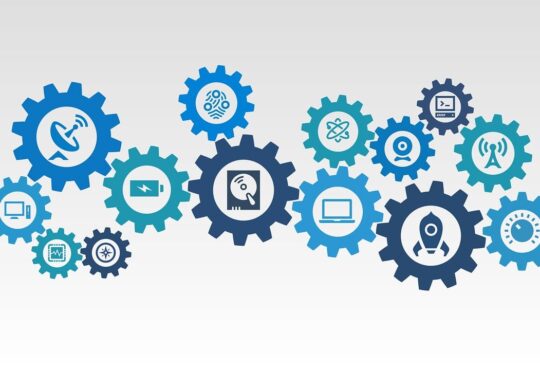
I am hearing quite a bit about API Marketplaces lately. Some companies are already delivering an API marketplace, many are expressing a desire to be one (although exactly what they mean by this is very inconsistent), and some are deciding if this is a direction that they want to go.
What is an API Marketplace?
Marketplaces are where buyers and sellers of goods come together to transact business. Applying this to APIs, it is where API consumption transacts. API providers offer their APIs to target consumers and API consumers can come see what APIs are offered to them and choose to use/purchase those that they like.
Technically, an API marketplace is frequently built using an API management solution’s developer portal. A good marketplace will have a simple interface with categories and search and provide all necessary information for self-service consumption of the API. This includes providing documentation, sample code, allowing potential consumers to try the API, FAQs, blogs, ratings, feedback, etc.
The Business of “Simple” API Marketplaces
In my marketplace discussions, I am hearing some businesses say they want to provide an API marketplace when what they mean is that they want to provide solely their own APIs to external audiences – i.e. partner or public audiences. In this model, there is one provider (their company) to many consumers. Many would argue this is not a marketplace since marketplaces imply many API providers. But, I’ll go along and call this a ‘simple’ marketplace.
These businesses view this as a marketplace because they are starting to think about monetization of their assets. The logic goes as follows: Marketplaces are where businesses execute financial transactions, we want to make money through APIs, so the point at which API transactions can occur is an API marketplace.
There are many models for monetization. As we extend outside the enterprise through partners or public API scenarios, the number and type of monetization models expand. We may have direct monetization models where consumers pay for our APIs or the data/transactions that are executed. We may also have scenarios for referrals: where we obtain new customers, revenue sharing through new business models, or increased ‘sticky-ness’ through integrated B2B interactions. In addition, there is a “multiplication” factor. I will have many partner/public consumers all using my APIs and acting as a new channel which expands my market reach.
Business Considerations for “Advanced” API Marketplaces
Most consider an API marketplace to be a many providers to many consumers model. This ‘advanced’ marketplace has several points that need to be considered by both the provider and consumer, including:
-
- Why should an API provider choose to be in your marketplace?
So, you want to host an API marketplace. Why would other companies want to put their APIs in your marketplace? If you can’t answer this question, there is a big problem.Typically the reason why someone would want to be in your marketplace is because you already have many API consumers looking there. However, if this is not the case, and it most likely is not the case in the early stages, then there needs to be some synergy between the API offerings. Your APIs, plus the other company’s APIs must be able to work together to provide a better range of solutions to potential consumers, for example.
- Why should an API provider choose to be in your marketplace?
-
- What is the monetization model for your marketplace?
There are a wide range of models that could be applied between your marketplace and other API providers. You may use a “free” model where, because there is no charge, you obtain many API providers. Then, by having many API providers, you attract many API consumers to the marketplace which increases the consumption for all and you all drive independent revenue.Another scenario is ‘direct’ monetization where you charge the other API providers based on some metric e.g. views, referrals, sign-ups, resource consumption, use of value-added services, etc.Finally, there may be some ‘indirect’ models where you obtain revenue based on the other provider’s API usage in a consumer or business application, driving a new revenue model for your business. This could take several forms. Examples include: a shared revenue model where your business obtains a percentage of the transaction value for driving the consumption of the other business’ APIs in the marketplace or additional advertising revenue that comes from increased consumer visits to the marketplace who are an attractive audience for API providers. Many additional ‘indirect’ scenarios are also possible.
- What is the monetization model for your marketplace?
-
- Will you provide value-added services to API providers?
Perhaps your marketplace is simply a pass-through to the API provider’s own developer portal. ProgrammableWeb uses this model. It is a very popular site to find APIs. They provide some articles and other materials, and, in part, use an advertising revenue model, but they do not add any API hosting function other than enabling the consumer to find an API provider and pass the consumer onward.At the other extreme you can include the other provider’s APIs directly in your portal and host the API on your gateway. You can perform rate limiting and initial API level security before passing the execution onward to the provider. You might also perform billing, provide analytics, and other functions for the provider. Of course, all of this might support your monetization model charges. IBMs cloud provides the combination of both IBM and non-IBM provided services as an example of this scenario.
- Will you provide value-added services to API providers?
-
- Are you verifying API providers?
What are you saying about the companies that are hosted in your API marketplace? Perhaps you are saying nothing. Anyone can come host their APIs in your marketplace and you perform no verification. But, what if it turns out that a ‘bad API’ is hosted that either steals information or performs malicious activity? Do you have any responsibility as the marketplace that offered the API? Are you sufficiently legally protected?If you do verify a provider, what level of verification are you providing? Perhaps you might validate that the other provider is not performing criminal activity and is a valid business. Good start. But, you could go further and validate that the APIs provided meet certain quality levels or other criteria you set forth. This can get complicated. But, it can also be a high value capability sought by consumers. In my blog “Creating A Digital Ecosystem – Past, Present, and Future” I talk about automating ecosystem partners at a business level as the future and needing a trusted third party to validate the parties involved. Taking on this role in your marketplace can be a linchpin to the success of ecosystems and quite a powerful position to hold.
- Are you verifying API providers?
Becoming an API Marketplace is very attractive, and it seems that everyone I talk to wants to be at this center of API attention. But, not everyone is going to be able to be a marketplace. If you intend to offer an API marketplace, think about why this should be you. What are you offering to the API ecosystem that justifies your location as this central figure?









